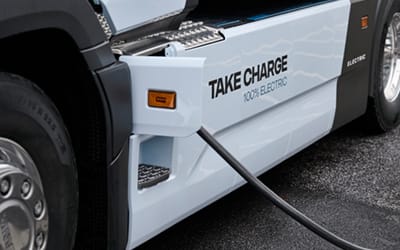HGV Charging Facilities: Infrastructure
The transition to electric heavy goods vehicles faces unprecedented challenges as inadequate HGV charging facilities continue blocking widespread adoption across the UK and European freight industry. Despite government mandates requiring zero emission HGV sales by 2035-2040, the fundamental infrastructure barriers remain largely unaddressed, creating substantial operational hurdles for logistics companies committed to decarbonisation goals.
Current HGV charging facilities represent less than 3% of all public charging infrastructure, yet electric lorries require significantly more power, space, and time compared to conventional passenger vehicles. This critical mismatch between vehicle capabilities and available infrastructure creates a complex web of challenges that freight operators must navigate whilst maintaining competitive service levels and managing escalating operational costs.
The scope of required HGV charging facilities investment extends far beyond simple installation costs, encompassing grid capacity upgrades, depot modifications, and route planning complexities that fundamentally reshape logistics operations. Understanding these barriers becomes essential for freight companies planning strategic transitions toward road freight sustainability whilst maintaining operational effectiveness.
Infrastructure Capacity: The Fundamental Challenge
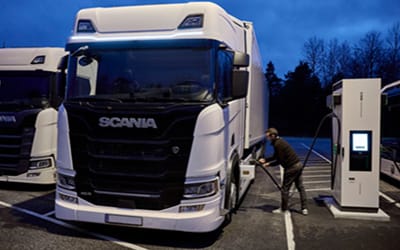 Grid capacity constraints represent the most significant barrier limiting HGV charging facilities deployment across the UK and Europe. Electric lorries requiring 300kW to 1MW charging power place unprecedented demands on electrical networks designed for significantly lower consumption patterns. Distribution network operator upgrades often require 9-12 months lead times, creating substantial delays for companies attempting rapid fleet electrification.
Grid capacity constraints represent the most significant barrier limiting HGV charging facilities deployment across the UK and Europe. Electric lorries requiring 300kW to 1MW charging power place unprecedented demands on electrical networks designed for significantly lower consumption patterns. Distribution network operator upgrades often require 9-12 months lead times, creating substantial delays for companies attempting rapid fleet electrification.
The scale of electrical infrastructure required for comprehensive HGV charging facilities exceeds most depot capacities by factors of 10-20, necessitating expensive utility upgrades that can cost hundreds of thousands of pounds per location. Many industrial sites lack sufficient electrical capacity to support even modest electric vehicle infrastructure requirements without major grid connection modifications.
European cities face additional grid constraints as urban charging demand increases exponentially, forcing fleet operators to invest in expensive battery storage systems to manage peak electricity consumption. These capacity limitations create operational bottlenecks that restrict fleet utilisation and require fundamental changes to logistics planning methodologies across the freight industry.
Strategic grid planning remains fragmented across different regions, with some areas prioritising residential charging infrastructure over commercial requirements. This disparity creates geographical limitations that affect route planning and operational efficiency for companies operating nationwide logistics operations requiring consistent road freight sustainability performance.
Economic Barriers: Cost and Investment Challenges
The economic barriers surrounding HGV charging facilities create substantial impediments for fleet operators already managing tight profit margins and competitive pressure. Initial capital costs for electric lorries reach 2-3 times conventional diesel equivalents, whilst supporting charging infrastructure requires additional investments of £100,000-500,000 per depot location depending on fleet size and power requirements.
Government grant schemes provide limited support compared to total investment requirements, with the UK plug in truck grant ending in 2025 despite industry calls for extended financial assistance. Fleet operators face difficult decisions between maintaining competitive pricing and investing in sustainable technologies that may not provide immediate return on investment within typical asset lifecycles.
Operating cost uncertainty compounds investment hesitation, as electricity pricing for commercial charging remains volatile and significantly higher than domestic rates due to 20% VAT compared to 5% for residential users. This pricing disparity creates ongoing operational cost pressures that affect the business case for electric vehicle infrastructure adoption across the freight sector.
Insurance, maintenance, and training costs for electric vehicle infrastructure add additional financial complexity that many operators struggle to quantify accurately. The lack of established service networks for HGV charging facilities creates uncertainty around long term support costs and equipment reliability, particularly for companies operating in remote or rural locations.
Technical Limitations: Range & Operational Constraints
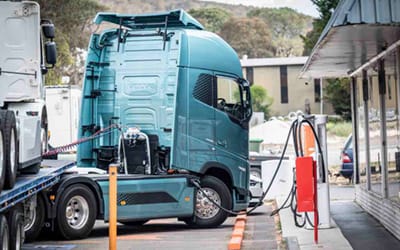 Technical limitations of current electric vehicle infrastructure create operational constraints that fundamentally challenge established logistics practices. Most electric lorries provide 200-400km range under optimal conditions, significantly less than the 800-1000km typical for diesel vehicles, requiring fundamental changes to route planning and driver scheduling systems.
Technical limitations of current electric vehicle infrastructure create operational constraints that fundamentally challenge established logistics practices. Most electric lorries provide 200-400km range under optimal conditions, significantly less than the 800-1000km typical for diesel vehicles, requiring fundamental changes to route planning and driver scheduling systems.
Charging speeds remain problematic despite technological advances, with even ultra rapid HGV charging facilities requiring 30-45 minutes for meaningful range extension. This charging time conflicts with driver regulations and delivery schedules that depend on rapid turnaround times for maintaining competitive service levels across demanding logistics operations.
Weight penalties from battery systems reduce cargo capacity by 1-3 tonnes depending on vehicle configuration, creating additional operational constraints that affect profitability per journey. This capacity reduction requires more vehicles to handle equivalent freight volumes, offsetting some environmental benefits whilst increasing capital requirements for fleet replacement programmes.
Temperature sensitivity of battery systems affects performance during winter conditions common across northern European operations, reducing range by 20-40% and requiring additional heating systems that further impact operational efficiency. These technical constraints create reliability concerns for temperature sensitive or time critical cargo requirements.
Geographic and Accessibility Challenges
Geographic distribution of HGV charging facilities remains heavily concentrated in southern England and major European corridors, creating significant accessibility challenges for operators serving diverse regional markets. Rural and peripheral areas lack adequate electric vehicle infrastructure, limiting route options and operational flexibility for companies dependent on comprehensive geographic coverage.
Motorway service area limitations compound accessibility problems, as most locations lack space, electrical capacity, or planning permission for comprehensive HGV charging facilities installation. The limited number of suitable sites creates potential bottlenecks during peak travel periods and reduces operational reliability for long distance logistics operations.
Cross border operations face additional complexity as different European countries implement varying standards, payment systems, and access requirements for electric vehicle infrastructure. This fragmentation creates operational challenges for international freight operators requiring seamless road freight sustainability across multiple jurisdictions.
Urban access restrictions increasingly favour electric vehicles through low emission zones and congestion charging exemptions, creating competitive pressure for fleet electrification despite infrastructure limitations. Companies serving urban markets face difficult choices between maintaining service levels and complying with evolving environmental regulations.

Policy and Regulatory Framework Challenges
Regulatory uncertainty surrounding HGV charging facilities standards creates investment hesitation among fleet operators and infrastructure providers. Different European jurisdictions implement varying technical requirements, safety standards, and grid connection procedures that complicate multi national logistics operations and infrastructure planning decisions.
The UK government’s electric vehicle infrastructure strategy addresses passenger vehicle requirements comprehensively but provides limited specific guidance for commercial vehicle infrastructure needs. This policy gap creates uncertainty around future support mechanisms and regulatory requirements affecting long term investment planning.
Planning permission processes for HGV charging facilities often involve complex procedures designed for passenger vehicle infrastructure, creating delays and additional costs for commercial installations. Local authorities frequently lack expertise in assessing commercial electric vehicle infrastructure requirements, leading to inconsistent application processes and extended approval timelines.
Grid connection policies remain fragmented across different distribution network operators, with varying procedures, costs, and timelines that complicate strategic infrastructure planning. Standardisation efforts progress slowly whilst fleet operators require immediate clarity for investment decisions affecting competitive positioning and operational effectiveness.
Strategic Solutions and Industry Adaptation
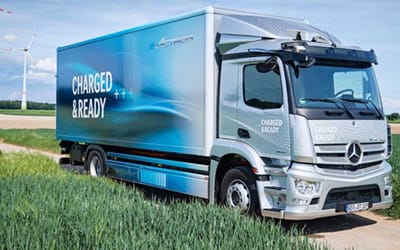 Forward thinking logistics companies are developing innovative approaches to overcome HGV charging facilities limitations through strategic partnerships, technology adoption, and operational modifications. Collaborative charging hubs enable multiple operators to share infrastructure costs whilst ensuring adequate utilisation levels for economic viability and operational reliability.
Forward thinking logistics companies are developing innovative approaches to overcome HGV charging facilities limitations through strategic partnerships, technology adoption, and operational modifications. Collaborative charging hubs enable multiple operators to share infrastructure costs whilst ensuring adequate utilisation levels for economic viability and operational reliability.
At SARR Logistics UK, our commitment to road freight sustainability drives strategic planning for electric vehicle infrastructure integration whilst maintaining operational excellence across our comprehensive service portfolio. Our experienced road freight team understands the complex challenges facing fleet electrification and provides expert guidance for businesses navigating this transition.
Our sustainable logistics expertise extends beyond road transport to include intermodal solutions that optimise environmental performance whilst maintaining competitive service levels. By combining sea freight, air freight, and rail freight capabilities, we provide comprehensive alternatives that support decarbonisation goals without compromising operational effectiveness.
The integration of electric vehicle infrastructure requires fundamental changes to depot design, workforce training, and operational procedures that extend far beyond vehicle replacement. Companies implementing successful transitions invest heavily in staff development, route optimisation systems, and customer communication strategies that address service level expectations during the transition period.
Technological Innovation and Future Developments
Emerging technologies promise to address current HGV charging facilities limitations through improved battery density, faster charging speeds, and innovative power delivery systems. Megawatt charging systems approaching deployment offer potential charging times comparable to diesel refuelling, whilst advanced battery technologies extend range capabilities toward conventional vehicle performance levels.
Dynamic charging systems using overhead cables or embedded road infrastructure represent potential solutions for long distance freight operations, with successful pilots underway in Germany, Sweden, and the UK. These technologies could eliminate range anxiety and reduce battery requirements whilst maintaining operational flexibility for diverse logistics applications.
Smart charging systems optimise electricity consumption through demand management and grid balancing services, potentially reducing operational costs whilst supporting grid stability. These systems require sophisticated integration with fleet management systems and operational planning processes that fundamentally change logistics operational methodologies.
Vehicle to grid technologies enable electric lorries to provide grid services during downtime, creating potential revenue streams that improve investment returns whilst supporting electrical system stability. This bidirectional capability requires advanced infrastructure and regulatory frameworks that remain under development across most European markets.
Industry Collaboration and Investment Strategies
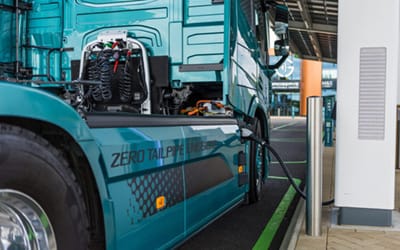 Successful HGV charging facilities deployment requires unprecedented collaboration between logistics operators, infrastructure providers, utility companies, and government agencies. Industry consortiums enable knowledge sharing, risk mitigation, and coordinated investment strategies that accelerate infrastructure development whilst managing individual company exposure to technological and market risks.
Successful HGV charging facilities deployment requires unprecedented collaboration between logistics operators, infrastructure providers, utility companies, and government agencies. Industry consortiums enable knowledge sharing, risk mitigation, and coordinated investment strategies that accelerate infrastructure development whilst managing individual company exposure to technological and market risks.
Private investment in electric vehicle infrastructure continues expanding as institutional investors recognise long term growth potential and regulatory certainty. Major fuel retailers, utility companies, and logistics property developers invest billions in comprehensive charging networks designed specifically for commercial vehicle requirements.
Leasing and service models reduce upfront investment requirements whilst providing operational flexibility for companies uncertain about optimal technologies and infrastructure configurations. These arrangements enable access to latest technologies without substantial capital commitments whilst ensuring ongoing support and maintenance services.
Public private partnerships leverage government funding with commercial expertise to accelerate infrastructure deployment in strategic locations. These collaborative approaches address market failures whilst ensuring sustainable business models that support long term operational viability and continued investment in expanding networks.
SARR Logistics: Supporting Your Sustainability Journey
 Understanding the complexities of HGV charging facilities deployment requires expert guidance from logistics professionals committed to road freight sustainability whilst maintaining operational excellence. Our comprehensive logistics services portfolio positions SARR Logistics UK to support your decarbonisation objectives through strategic planning and innovative service delivery across all transport modes.
Understanding the complexities of HGV charging facilities deployment requires expert guidance from logistics professionals committed to road freight sustainability whilst maintaining operational excellence. Our comprehensive logistics services portfolio positions SARR Logistics UK to support your decarbonisation objectives through strategic planning and innovative service delivery across all transport modes.
Our customs clearance expertise ensures seamless international operations as regulatory frameworks evolve to support sustainable transport initiatives. From documentation compliance to duty optimisation, our specialists provide comprehensive support for businesses navigating complex regulatory environments whilst implementing environmental objectives.
Strategic warehousing facilities positioned near major UK ports provide operational flexibility for businesses adapting to electric vehicle infrastructure constraints. Our locations near Felixstowe, Tilbury, Southampton, Liverpool and London Gateway enable efficient intermodal solutions that optimise route planning whilst supporting sustainable transport objectives.
Contact our experienced team at [email protected] or call 0333 224 1224 to discuss how we can support your road freight sustainability requirements. Our project cargo capabilities ensure specialised transport needs receive expert attention whilst maintaining environmental commitments and operational efficiency.
Conclusion
The challenge of inadequate HGV charging facilities represents a fundamental transformation requirement for the freight industry rather than simply a technological upgrade. Successful navigation of these barriers requires strategic planning, collaborative approaches, and expert guidance from logistics providers committed to sustainable operations whilst maintaining competitive service levels.
As electric vehicle infrastructure continues developing, businesses that proactively address these challenges through strategic partnerships and innovative operational approaches will capture significant competitive advantages. The transition period offers opportunities for forward thinking companies to establish leadership positions in sustainable logistics whilst contributing to broader environmental objectives.
Success requires comprehensive understanding of technical, economic, and operational factors affecting HGV charging facilities deployment. Companies investing in expertise, collaboration, and strategic planning will navigate these challenges effectively whilst building sustainable competitive advantages in the evolving logistics landscape.
FAQ
What are the main barriers preventing widespread HGV charging facilities deployment?
The primary barriers include insufficient grid capacity requiring expensive utility upgrades, high capital costs for both vehicles and infrastructure, limited charging speeds affecting operational efficiency, and geographic concentration of facilities in limited areas. Grid connection lead times of 9-12 months compound deployment challenges.
How much does it cost to install HGV charging facilities at a typical depot?
Installation costs vary significantly depending on fleet size and electrical capacity requirements, typically ranging from £100,000 to £500,000 per location. This includes infrastructure upgrades, charging equipment, and grid connection modifications. Many sites require utility upgrades that can double total investment requirements.
What government support is available for electric vehicle infrastructure investment?
UK government support includes the Zero Emission HGV Infrastructure Demonstrator programme providing £200 million funding, plug in van grants up to £5,000 until 2025, and Local Electric Vehicle Infrastructure funding for public charging. However, industry experts argue current support levels remain insufficient compared to total investment requirements.
How do HGV charging facilities affect logistics operations and route planning?
Electric lorries require fundamental changes to route planning due to limited range (200-400km) and charging time requirements (30-45 minutes for rapid charging). This affects driver scheduling, depot operations, and customer service levels. Many companies require more vehicles to maintain equivalent service capacity.
What technological developments could solve current HGV charging facilities limitations?
Emerging solutions include megawatt charging systems offering faster charging speeds, dynamic charging via overhead cables or embedded road systems, improved battery technologies extending range capabilities, and smart charging systems optimising electricity consumption. Governments increasing electic vehicle chargingpoint grants Vehicle to grid technologies could provide additional revenue streams supporting investment returns.


